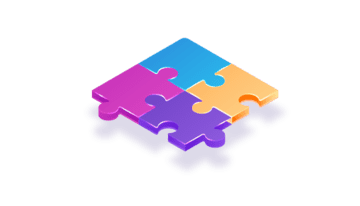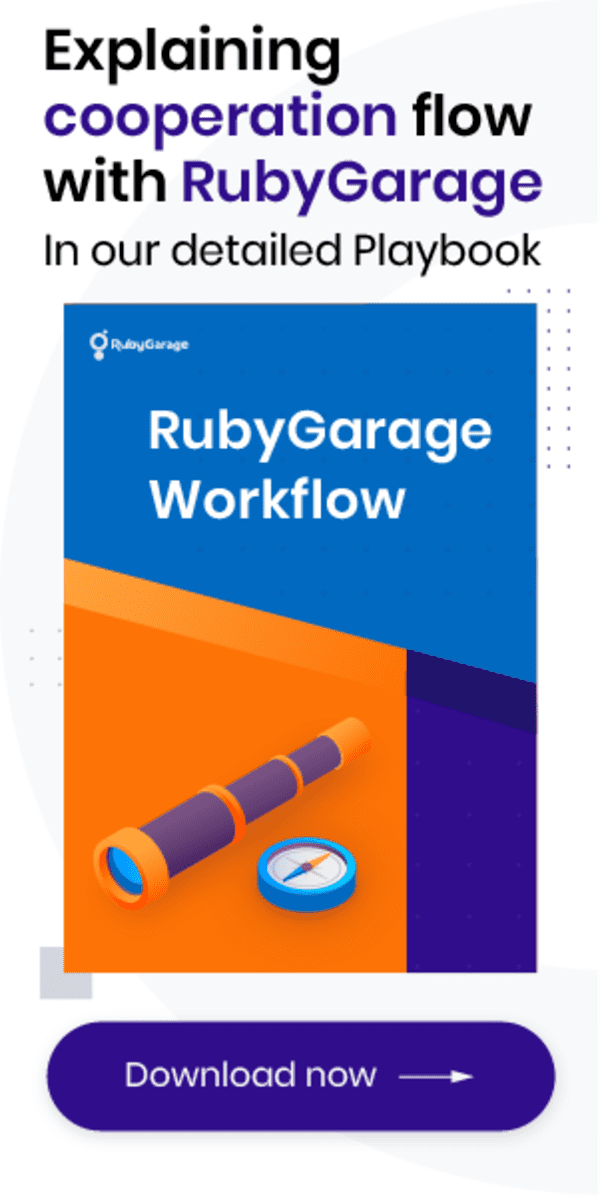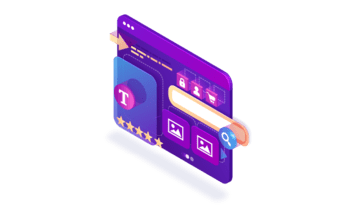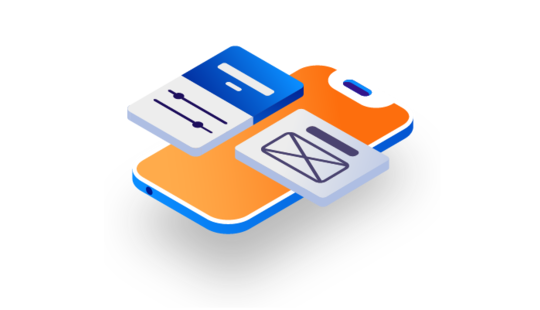-
Product Management
Software Testing
Technology Consulting
-
Multi-Vendor Marketplace
Online StoreCreate an online store with unique design and features at minimal cost using our MarketAge solutionCustom MarketplaceGet a unique, scalable, and cost-effective online marketplace with minimum time to marketTelemedicine SoftwareGet a cost-efficient, HIPAA-compliant telemedicine solution tailored to your facility's requirementsChat AppGet a customizable chat solution to connect users across multiple apps and platformsCustom Booking SystemImprove your business operations and expand to new markets with our appointment booking solutionVideo ConferencingAdjust our video conferencing solution for your business needsFor EnterpriseScale, automate, and improve business processes in your enterprise with our custom software solutionsFor StartupsTurn your startup ideas into viable, value-driven, and commercially successful software solutions -
-
- Case Studies
- Blog
Perfect digital product design team: goals, roles, and tasks
When you want to launch a product, you have to consider several factors to ensure its success. One of those factors is its design. Design is what makes users either love or hate your product, either return to it again and again or abandon it forever. And the people who make this difference are your product design team. In this post, we answer the following questions:
- What are the main goals at each stage of product design?
- Whom do you need to work with to create your digital product design?
- Where can you get your product design team?
Design team goals
To better understand what roles there are in product design, let’s take a deeper look at the design process itself and the goals of each step.

Step 1: Requirements engineering
First of all, the product design team has to take a look at the requirements. This will help ensure the product design aligns with your expectations and the product’s aims. The goals of this step are to:
- Understand the product’s business goals
- Turn clients’ expectations into comprehensive design specifications
- Define what methods and frameworks to use to fulfill the requirements
Achieving these goals is essential to ensure all the following steps are taken towards building the required product and doing so in the most efficient way.
As a result of this step, you receive:
- Documentation of business requirements
- Lean canvas or business canvas
- Defined user roles
- Features list
- Documentation of functional requirements
- Gherkin scenarios
- Functional specification
- Documentation of non-functional requirements
All deliverables from the requirements engineering step are the input for the next step — UX research.
Step 2: UX research
At this step, experts perform user and market research to ensure product–market fit and define crucial product traits. The main goals of UX research are to:
- Find relevant examples and references for the product
- Investigate best practices
- Analyze competitors and form a unique value proposition
- Understand users and their pain points
- Identify users’ needs
The data gathered while achieving these goals is presented in the UX research report, which is the main deliverable of this stage and includes:
- List of collected examples
- Market research report
- User research report
Thanks to this research, you get valuable data that helps you ensure your product will solve users’ needs and help you achieve your goals. After conducting research, you are ready to proceed and start creating your product.
Step 3: UX design
When you start designing a new product, you have to pay attention first to the user experience, as without solving users’ problems even the most beautiful interface design won’t be successful. The UX design step aims to:
- Get a vision of the whole system with the hierarchy and structure of pages
- Understand all users’ paths to the final action
- Visualize the interface
- Validate product feasibility with the development team
- Prepare UI texts
When achieving these goals, the product design team creates:
- A sitemap
- User flows
- UX wireframes
- Prototypes
While working on the user experience, the team creates a smooth user journey from the moment a user first sees your product to the moment they accomplish the target action. The point is to make the experience as convenient for the user as possible (so they consider your product the best tool to get what they need) while ensuring it is possible to create from the development side.
Step 4: User testing
The next task your product design team faces is ensuring the created UX meets users’ expectations and performs as expected. To check this, user testing is performed. The main goals of this step are to:
- Get potential users to use the product
- Detect and eliminate any issues in the user experience
- Validate and approve the prototype
The deliverable of user testing is a user testing report, though it’s not the main achievement. The key result is ensuring that the user experience really engages users and lets them achieve their goals. Ensuring this means the UX design step was successful and the team can move forward.
Step 5: UI design
When the UX design is ready, the design team can move to user interface design, which means making the product look attractive and appealing. At this step, the team has these goals:
- Explore and compile visual preferences of the product owner
- Create the visual design of all components in different states
- Design all screens according to the wireframes
- Create a complete prototype of the product interface
Achieving these design team goals involves creating some crucial deliverables:
- Moodboard and design concept
- Component library
- UI mockups
- Style guide and UI kit
As a result of this step, you get a ready design for your digital product and clear kits and guidelines for developers to follow. You can use these deliverables not only to create the product but also when you want to scale it or develop a related product in the same style.
Roles and tasks
Let’s look closely at different roles that might be involved in the product design process. Note that some of them overlap, so not all specialists are required for successful product design. We’ll look at the design team structure further; for now, we’re going to cover who can be involved in designing your product.

Product manager
The product manager (PM) is the person who brings together the business and the product design team. The PM dives deep into business processes and does their best to make the final product beneficial. Among the main tasks of the PM are:
- Performing detailed business analysis
- Conducting business problem discovery
- Offering relevant solutions
- Defining business requirements
- Creating design specifications
- Facilitating the work of the whole team
- Ensuring timely and high-quality results
The PM is responsible for requirements engineering but is also involved during the whole product design process, as they are responsible for the smooth process flow and delivery.
UX researcher
A UX researcher is responsible for gathering all data required for creating a quality product. This might include requirements gathering and analysis, market research, and user research. Here are the main tasks of a UX researcher:
- Collecting and analyzing the client’s requirements
- Making a research plan
- Hiring users for research
- Designing and executing user research
- Building user personas
- Designing and executing market research
- Preparing research reports
- Designing and conducting user testing
The UX researcher can be involved not only in UX research but also in requirements engineering, UX design, and user testing.
UX designer
The UX designer is the specialist involved with the broadest scope of work, as they might cover all aspects of the digital product design process. Accordingly, the tasks of the UX designer are vast:
- Collecting and analyzing the client’s requirements
- Planning and conducting user research
- Planning and conducting market research
- Building user personas
- Creating user stories
- Building user journeys
- Creating sitemaps
- Creating wireframes
- Building prototypes
- Conducting user testing
The main stage where such a specialist is involved is UX design, but the UX designer can take part in or conduct their own requirements engineering, UX research, UX design, and user testing.
UI designer
The UI designer is responsible for the visual appeal of your product, and they work tightly with the UX designer to accomplish their tasks:
- Collecting and analyzing the client’s requirements
- Researching competitors and best practices
- Creating moodboards and design concepts
- Creating component libraries
- Creating interface mockups for all states
- Creating responsive UI mockups
- Developing style guides and UI kits
- Developing brand identity
The UI designer is mostly involved in the UI design stage but can also be engaged in requirements engineering and UX research.
UX writer
The UX writer helps users navigate the product with the help of microcopy, and their main task is to prepare all texts for the UI to ensure a smooth user experience.
UX writers are usually involved at the UX design stage, taking part in creating prototypes.
Developer
A technical specialist in the design team is usually involved as a consultant to ensure the feasibility of designed solutions at the UX design stage.
Without a developer, you risk designing a beautiful product that cannot be built.
Design team structure
Although there are many different specialists who can be involved in your product design, not all of them are obligatory. As you can see, many perform similar tasks. Let’s look at different design team structures and when to apply them.

- Only one specialist — In this structure, a UI/UX designer will conduct the whole process on their own. This structure can be beneficial for small and relatively easy projects. But ensure the person involved possesses all necessary qualifications and experience.
- One specialist per step — You can involve a PM, UX researcher, UX designer, and UI designer, each of whom will be responsible for their set of tasks. Such a structure can fit any project.
- Multiple specialists per step — This structure assumes the involvement of multiple different specialists or even several of the same specialists for the same step. They can either complement each other or work together on the same job if the scope of work is large.
- Custom design team structure — You can involve different combinations of specialists depending on your needs and tasks. For example, you can hire a UX researcher and a UI/UX designer, or a PM, a UX designer, and a UI designer. The combination will depend on the skills of the specialists involved. The main demand is that the skills of the whole team cover the needs of the project.
When defining the quantity of specialists needed, take into account that quality depends only on the skills of your team and is not influenced by the number of team members. The size of your team can affect the time required for designing your digital product and the amount of work the team can manage.
Two ways to get your product design team
When you finally understand whom you need to design your digital product and why, it’s time to look at where to find your product design team. Basically, you have two options: gather the team yourself, looking for each specialist separately; or find a product design agency and outsource the task to them, while the agency will involve all necessary specialists from its side. Let’s look closer at each option.

Hire each specialist separately
Hiring each team member separately might become tricky, as it requires much expertise, time, and effort. Here, you also have two options: hire an in-house specialist or find a freelancer, though the process won’t have many differences.
Here’s how hiring each specialist to your team will look:
- Define where to look for your team members. When you’re looking for freelancers, go to platforms like Upwork, Freelancer, DesignCrowd, and Toptal; when you need an in-house product design team, look for specialists on Workable, Recruitee, and LinkedIn.
- Prepare a clear job post or search for candidates. You have to make a comprehensive job description to attract a relevant audience. Or you can look through all candidates to find suitable ones. We recommend taking the first option.
- Validate a candidate’s CV. After candidates start to respond, you have to study each candidate’s CV to ensure they have relevant experience and qualifications.
- Explore the portfolio. Look at the projects the candidate has accomplished. Did they face similar tasks? How did they cope with them?
- Validate hard and soft skills. The required skill set will depend on the role, but each role requires a candidate to possess specific skills. You should have enough technical knowledge to validate candidates, or you should invite someone who does to help you with skills validation.
- Make an offer and sign a contract. Finally, when you’ve found the right candidate, you can send an offer. You’d better have several candidates in case the first one doesn’t accept the offer.
As you can see, there are several difficulties related to this process. First of all, it takes a lot of time. Looking for one expert might take weeks or even months. Also, you have to possess great expertise in all related fields to hire, starting from preparing a job description and finishing with validating the candidate’s hard skills. Such things are not always possible to do on your own, so you might have to hire a consultant in order to hire experts.
Hire the whole team at once
Another option is to hire the whole team at once by contracting with an agency that will do all the work. In such a case, you don’t have to worry about the team structure; you just set goals and the agency will involve all necessary specialists.
Finding an agency also requires certain effort. Here are the steps to do it:
- Find potential vendors. You can do this using platforms like Clutch, Trustpilot, and GoodFirms, or by exploring lists of top product design agencies.
- Inspect customer ratings. The first thing that can show you whether an agency is worth working with is the ratings customers give it. Study ratings and reviews and find out what customers appreciate about an agency’s work and whether they recommend it.
- Investigate the portfolio. Look for similar projects or tasks accomplished. It would be best if you could not only read about the products an agency has created but also try them in action. So if you see a mobile app or a website with open access in the agency’s portfolio, download it or go to it and try it out.
- Validate skills. This step is optional if you fully trust an agency or if you don’t have the opportunity to do it. But asking basic questions to find out the level of expertise and the experience of the team that will be involved in your project is a good idea.
- Explore the workflow. Even if you can’t validate skills, you should check the product design process within an agency. The workflow should be defined and time-proven so that your project won’t get stuck on one of the stages because of poor work organization.
- Find out if an agency has a design system. A set of templates or patterns can make product design much more efficient, as the team won’t waste time for standard solutions like a login page, shopping cart, or menu bar.
- Check social involvement. Another sign of an agency’s expertise is their being involved in tech communities and sharing knowledge throughout the industry. This point might be hard to check, but if you see a comprehensive blog with answers to difficult questions, it’s a good sign.
Involving an agency in your digital product design can win you much time and money. First of all, you don’t have to put in much effort looking for each team member separately. Secondly, the agency’s expertise is usually higher and the processes are more efficient than separate specialists have. Finally, an agency doesn’t require your full involvement at every step; you just explain what you need and validate the results at certain points.
Final word
When you need to find a product design team, first of all you have to define why you need them: what goals you want to achieve, what problems you want to solve, and what tasks you want to accomplish. As soon as you have the design team goals, you can define specialists needed and their desirable qualifications. But be ready to adjust your design team structure if some of your employees lack some skills.
The easiest way to get the whole product design team is to hire a design agency to work on your project. Then you’ll have all the tasks accomplished, and the team structure and qualifications will not be your concern.
FAQ
-
To build a product design team, you need to:
- Understand why you need the team — your aims and goals
- Define the team’s goals
- Define the team’s structure according to the goals
- Find and hire each team member
- Or outsource the product design to a professional team
-
A product design team takes your solution from your requirements and wishes to a responsive prototype with guidelines for developers. Usually, it’s done through defined steps:
- Requirements engineering
- UX research
- UX design
- User testing
- UI design
The team is responsible for delivering high-quality results at each step.
-
There’s no perfect structure for a product design team. You can benefit from hiring just one specialist who will do all the work, or from hiring a dozen experts each having their own scope of work. The most important thing is that the skills of your team should cover all the needs of your project.
You also can scale the team by adding more specialists to complete large tasks faster or to fill gaps in the existing team’s expertise.










